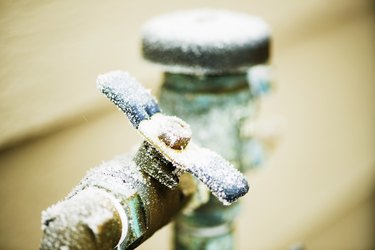Critical Approaches for Preventing Frozen Plumbing in Winter
Critical Approaches for Preventing Frozen Plumbing in Winter
Blog Article
Just how do you actually feel about How To Avoid Freezing Pipes?

Cold weather can ruin your plumbing, specifically by freezing pipes. Below's how to stop it from happening and what to do if it does.
Intro
As temperatures decrease, the threat of icy pipes boosts, possibly resulting in pricey repair work and water damages. Recognizing how to stop icy pipelines is important for homeowners in cool climates.
Avoidance Tips
Protecting prone pipelines
Cover pipelines in insulation sleeves or utilize warm tape to safeguard them from freezing temperature levels. Focus on pipes in unheated or outside locations of the home.
Heating strategies
Maintain interior spaces appropriately heated up, especially locations with plumbing. Open cabinet doors to allow cozy air to flow around pipelines under sinks.
Exactly how to determine frozen pipelines
Try to find reduced water flow from taps, unusual odors or sounds from pipes, and noticeable frost on subjected pipelines.
Long-Term Solutions
Architectural adjustments
Consider rerouting pipes far from exterior wall surfaces or unheated areas. Include extra insulation to attic rooms, basements, and crawl spaces.
Upgrading insulation
Buy premium insulation for pipes, attic rooms, and wall surfaces. Correct insulation assists keep constant temperatures and reduces the threat of frozen pipelines.
Protecting Outdoor Pipes
Garden tubes and outside faucets
Separate and drain pipes yard pipes prior to winter. Mount frost-proof spigots or cover exterior faucets with shielded caps.
Recognizing Icy Pipelines
What triggers pipes to freeze?
Pipelines ice up when subjected to temperatures listed below 32 ° F (0 ° C) for extended durations. As water inside the pipes ices up, it expands, putting pressure on the pipeline walls and possibly creating them to burst.
Threats and problems
Frozen pipes can bring about water system disturbances, building damage, and expensive repair services. Ruptured pipelines can flooding homes and cause substantial architectural damages.
Signs of Frozen Pipeline
Recognizing icy pipelines early can stop them from breaking.
What to Do If Your Pipelines Freeze
Immediate actions to take
If you presume icy pipelines, keep faucets open to alleviate pressure as the ice thaws. Utilize a hairdryer or towels soaked in hot water to thaw pipelines gradually.
Conclusion
Stopping icy pipelines calls for aggressive steps and quick reactions. By comprehending the causes, signs, and safety nets, home owners can protect their pipes throughout cold weather.
5 Ways to Prevent Frozen Pipes
Drain Outdoor Faucets and Disconnect Hoses
First, close the shut-off valve that controls the flow of water in the pipe to your outdoor faucet. Then, head outside to disconnect and drain your hose and open the outdoor faucet to allow the water to completely drain out of the line. Turn off the faucet when done. Finally, head back to the shut-off valve and drain the remaining water inside the pipe into a bucket or container. Additionally, if you have a home irrigation system, you should consider hiring an expert to clear the system of water each year.
Insulate Pipes
One of the best and most cost-effective methods for preventing frozen water pipes is to wrap your pipes with insulation. This is especially important for areas in your home that aren’t exposed to heat, such as an attic. We suggest using foam sleeves, which can typically be found at your local hardware store.
Keep Heat Running at 65
Your pipes are located inside your walls, and the temperature there is much colder than the rest of the house. To prevent your pipes from freezing, The Insurance Information Institute suggests that you keep your home heated to at least 65 degrees, even when traveling. You may want to invest in smart devices that can keep an eye on the temperature in your home while you’re away.
Leave Water Dripping
Moving water — even a small trickle — can prevent ice from forming inside your pipes. When freezing temps are imminent, start a drip of water from all faucets that serve exposed pipes. Leaving a few faucets running will also help relieve pressure inside the pipes and help prevent a rupture if the water inside freezes.
Open Cupboard Doors
Warm your kitchen and bathroom pipes by opening cupboards and vanities. You should also leave your interior doors ajar to help warm air circulate evenly throughout your home.

I'm certainly very curious about How to prepare your home plumbing for winter weather and I am praying you enjoyed the new piece. Are you aware of somebody who is looking into Winter Plumbing Precautions: Preventing Frozen Pipes? Do not hesitate to promote it. I am grateful for your time. Please check our website back soon.
Click Here Report this page